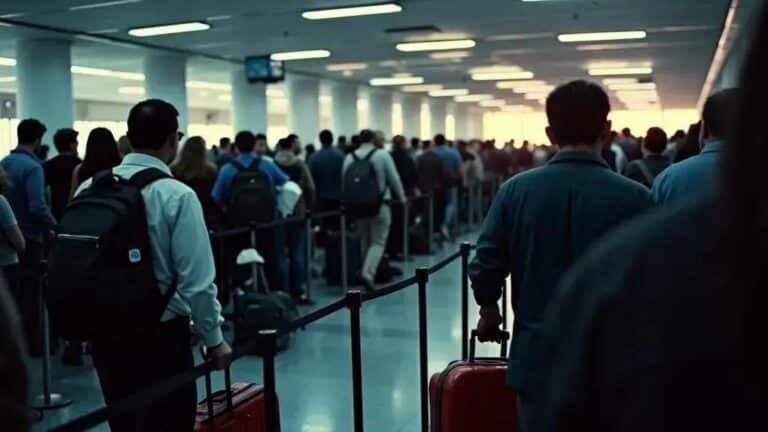Monkey escape after a Mississippi truck crash has left residents and researchers asking who owned the animals, what dangers (if any) existed, and why key details remain hidden — could clearer rules have prevented this? Read on to see what’s known and what’s still unanswered.
The crash: overturned truck, escaped rhesus macaques and the search response
A truck carrying research monkeys crashed on a Mississippi highway. This happened recently, causing a major stir. The vehicle overturned, letting several monkeys escape. State officials and local police quickly responded to the scene.
Emergency Response and Search Efforts
After the crash, a number of rhesus macaques got loose. Authorities immediately launched a search. They warned the public to stay away from the animals. These monkeys can carry diseases. They might also bite if approached. The search involved many teams.
Local residents were told to be careful. They were asked to report any sightings of the monkeys. The goal was to catch all the escaped animals safely. This was important for both public health and the monkeys’ well-being. The search continued until all were found.
Recapture and Public Health Concerns
All the escaped monkeys were eventually recaptured. This brought relief to the community. However, the incident raised questions. People wondered about the safety of transporting such animals. They also worried about potential health risks. The CDC was likely involved due to the nature of the animals.
The crash highlighted the need for clear rules. It also showed the importance of public information. When animals like these escape, people need to know. They need to understand any risks involved. This event sparked a wider discussion about animal research transport.
Ownership and secrecy: who owns the monkeys and why details are withheld
After the crash, many people wondered: who owned these monkeys? The answer wasn’t clear right away. This lack of information caused concern. It highlighted a common issue with research animals.
The Mystery of Monkey Ownership
Often, animals used for research are owned by private companies. These companies might supply animals to labs. Or, they might conduct their own studies. Details about these operations are usually kept secret. This is often done to protect their work.
The public rarely gets to know who owns such animals. They also don’t know where they are going. This secrecy can make people uneasy. Especially when an incident like the monkey escape happens. People want to know about potential risks.
Reasons for Withholding Information
There are several reasons why details are kept private. Research facilities want to protect their studies. They also want to avoid protests from animal rights groups. Sharing too much information could make them targets. This is a big concern for many labs.
However, this secrecy can clash with public safety. When animals escape, people need facts. They need to understand any health risks. The balance between privacy and public right-to-know is tricky. The Mississippi incident brought this issue to light.
Public Calls for Transparency
The crash led to calls for more openness. People believe they have a right to know. They want to understand how research animals are transported. They also want to know about their health status. This event showed that current rules might need a review. More transparency could help build trust.
Health and safety: pathogen concerns, euthanasia reports and recapture outcomes
When the monkeys escaped, a big worry was public health. These animals, called rhesus macaques, can carry diseases. These diseases are known as pathogens. Some pathogens can be passed to humans. This is why officials acted fast.
Understanding Pathogen Concerns
One main concern is the herpes B virus. Rhesus macaques can carry this virus. It usually doesn’t harm the monkeys. But, it can be very dangerous for humans. A bite or scratch from an infected monkey could cause serious illness. This is why people were warned to stay away.
The Centers for Disease Control and Prevention (CDC) was involved. They helped assess the risks. Their goal was to protect both the public and the animals. Knowing about these potential health risks is crucial during such events.
Recapture Efforts and Outcomes
All the escaped monkeys were eventually caught. This was a relief for everyone. After recapture, the animals were checked by veterinarians. They looked for injuries from the crash. They also checked for signs of illness. This ensured the monkeys were healthy.
Reports mentioned that some monkeys were euthanized. This means they were humanely put down. This decision is often made if an animal is badly hurt. Or, if it poses a significant health risk. It’s a difficult choice made for safety and welfare reasons.
Ensuring Safety After the Incident
The successful recapture helped prevent further risks. The animals were then taken to a secure facility. This incident highlighted the need for strict transport rules. It also showed how important quick action is. Protecting both people and animals is always the top priority.
Context and consequences: past escapes, transport contracts and calls for transparency
The Mississippi monkey escape wasn’t a one-time event. Similar incidents have happened before. These past escapes show a pattern. They highlight ongoing issues with how research animals are moved. Each time, public safety and animal welfare become big concerns.
History of Animal Escapes
There have been other cases where research animals got loose. Sometimes, these were monkeys. Other times, different animals escaped. These events often lead to public worry. They also raise questions about safety measures. It makes people wonder if enough is being done.
Each escape brings attention to the system. It shows that transporting these animals has risks. Learning from past events is important. It helps prevent future problems. This recent crash adds to that history.
Secretive Transport Contracts
Moving research animals often involves private companies. They have contracts with labs and facilities. These contracts are usually kept secret. The public doesn’t know the details. This includes who is transporting the animals. It also covers the routes they take.
This secrecy makes it hard to get answers after an incident. People want to know who is responsible. They also want to understand the safety rules. But private contracts can hide this information. This can be frustrating for the public.
Growing Calls for Transparency
The Mississippi crash led to strong calls for more openness. People want to know more about these operations. They believe there should be more public oversight. This means clearer rules for transporting animals. It also means sharing more information with the public.
Greater transparency could help build trust. It could also make these transports safer. When details are hidden, it creates suspicion. Openness can help address public fears. It can also lead to better practices for everyone involved.
Fonte: Fortune.com








